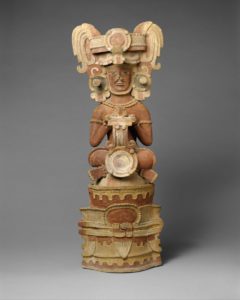The banking model is a way Paulo Freire the education system. This model shows a student as an empty container being filled with knowledge by their educator. This also lets the teachers put whatever they want into the students regardless of the effect it will have students. It takes away some of the creativity of the students because they have to learn what they are told. I noticed that this has happened to me in some classes that I have taken in high school and even some classes now. Some of my professors have all the answers to the question in textbooks and if we have a question they tell us the answers are in the textbooks when we have test the questions come right out of the textbook so it feels similar to the banking model. This might be good because it allows students to learn a lot of information quickly and they could try to apply it to their own work.
Category: Uncategorized
Final Project – Walking Tour
Hello, and welcome to my tour. My name is Perel, but you can call me Perri. Today we will be talking about Egyptian art and the use of Hieroglyphics/hieroglyphs within them. Hieroglyphics was the written language of Ancient Egypt. “It was in form of objects–animals, plants, and household items–that the ancient Egyptians saw around them every day.” (Teeter) 
The second piece of ancient Egyptian hieroglyphics that we’ll look at is papyrus and the hieroglyphics written on it. Papyrus is a plant that was used for a number of objects, but the most important us was as a “writing surface” for things like “household and administrative documents, letters, contracts and other legal texts, illustrated narratives, and religious texts.”
 This piece of papyrus has hieroglyphics on it since that was the only form of writing that was available. There are more than 800 used hieroglyphics, but the most common are the twenty-four that are used to sound out words (like the English letters).
This piece of papyrus has hieroglyphics on it since that was the only form of writing that was available. There are more than 800 used hieroglyphics, but the most common are the twenty-four that are used to sound out words (like the English letters).
 Next we are going to look at the amulets. These were put on jewelry, put around the house to beautify the dwelling, or buried with a mummy to have positive energy. Many Egyptians carried them around as a form of good luck and to bring positive energy. Some of the amulets had writing on it, hieroglyphics, to write exactly what energy they wanted the amulets to bring them. They were the perfect thing to carry around because of their size, they were convenient.
Next we are going to look at the amulets. These were put on jewelry, put around the house to beautify the dwelling, or buried with a mummy to have positive energy. Many Egyptians carried them around as a form of good luck and to bring positive energy. Some of the amulets had writing on it, hieroglyphics, to write exactly what energy they wanted the amulets to bring them. They were the perfect thing to carry around because of their size, they were convenient.
 The next thing we’ll look at is “Mummy Mask of a Woman with a Jeweled Garland”. THis was a mask placed over the mummy before it was placed in the tomb. There are paintings all around it to tell the story of the person in the mummy, to bring good energy to the persons transition to the afterlife, and to beautify the mummy so that the person is honored. Within the beautiful painting there are hieroglyphics. This is done to explain some of the painting, to give some positive words, and to identify the person within the mummy.
The next thing we’ll look at is “Mummy Mask of a Woman with a Jeweled Garland”. THis was a mask placed over the mummy before it was placed in the tomb. There are paintings all around it to tell the story of the person in the mummy, to bring good energy to the persons transition to the afterlife, and to beautify the mummy so that the person is honored. Within the beautiful painting there are hieroglyphics. This is done to explain some of the painting, to give some positive words, and to identify the person within the mummy.
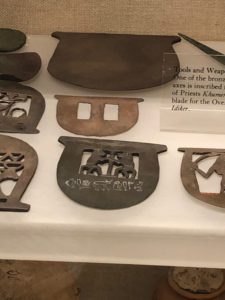 The last piece we are going to look at are these weapons. These were used by the Egyptians in battle. The curved edge was sharp and was a knife to fight the enemies. The hieroglyphics were engraved onto these items to give the fighter good luck in battle, and to mark who’s weapon is whoms. Each hieroglyph can be an entire word so even though there are about ten hieroglyphics on the piece it could say numerous things.
The last piece we are going to look at are these weapons. These were used by the Egyptians in battle. The curved edge was sharp and was a knife to fight the enemies. The hieroglyphics were engraved onto these items to give the fighter good luck in battle, and to mark who’s weapon is whoms. Each hieroglyph can be an entire word so even though there are about ten hieroglyphics on the piece it could say numerous things.
This tour was designed to show the different ways in which hieroglyphics were used and the different objects it was used on and I hope I accomplished that.
- Kamrin, Janice. “Papyrus in Ancient Egypt.” In Heilbrunn Timeline of Art History. New York: The Metropolitan Museum of Art, 2000–. http://www.metmuseum.org/toah/hd/papy/hd_papy.htm (March 2015)
- Patch, Diana Craig. “Egyptian Amulets.” In Heilbrunn Timeline of Art History. New York: The Metropolitan Museum of Art, 2000–. http://www.metmuseum.org/toah/hd/egam/hd_egam.htm (October 2004)
- “Rosetta Stone.” Britannica Online Academic Edition, 2018, pp. Encyclopædia Britannica, Inc.
- Teeter, Emily. “Egyptian Hieroglyphs.” Calliope, vol. 14, no. 9, 2004, pp. 7–10.
- The British Museum, “Paintings from the Tomb-chapel of Nebamun,” in Smarthistory, August 29, 2016, accessed December 12, 2018, https://smarthistory.org/paintings-from-the-tomb-chapel-of-nebamun/.
How to make a post
Step 1) Log onto your account using your cuny common credentials.
Step 2) Click on the “Sites” tab and select a specific site (i.e. Fall 2018 Art 1010 at Brooklyn College)
Step 3) Add yourself to the site (via a button on the left side of the screen that says “Add Me”)
Step 4) Click on the “+New” button on the top of the screen.
Step 5) Write a title and beginning filling in the body as well.
Step 6) Select a category and add a tag. Make sure to choose your class and add relevant tags.
Step 7: Hit the blue “Publish” button when ready to post.
Themed Museum Tour- Final Project
Rachel Swed
Art 1010
Professor Shaw
Evolution of Art
Art has been the center of many great civilizations. We see this all the way from the Egyptian art till today. Art has changed greatly over time but its ability to portray emotion or tell a story has remained. Art has become the center of human creativity and has existed for thousands of years. But what impacted artist from civilization to civilization and how did art evolve into what it is today?

In ancient Egypt, art was used to teach or portray a story, mainly for religious teachings and common rituals. Examples of this can be the numerous painting, sculptures, and pieces of gods, pharaohs, and death masks. One example from the Brooklyn Museum is The Head of a Queen, which is dated back to 1400 BCE. As we discussed in class, ancient civilizations loved making art pieces that depicted their rulers to demonstrate their power and reverence. This artwork was chosen because it’s a great example to show how prominent the kingdom was in Egypt. Religion has played a major key in the arts successes from music to paintings particularly in this civilization.
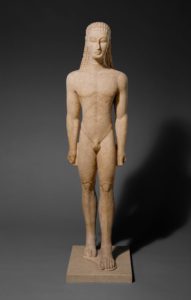
Contrarily, when looking at Greek and Roman art it incorporates humanism. Humanism’s main focus is on mankind, rather than divine or godlike matters. When looking at Greek and Roman art, we see large human sculptures like Kouros seen at the MET. This is a great example because the face, stomach, and legs of this sculpture are polished, glowing, and realistic, making it almost human. The sculpture also has robbed curls on its head, characteristic of Greek/Roman culture. The sculpture is standing on an angle, as if in motion making the figure seem alive. The nudity in this sculpture is a very common characteristic in Greek/Roman sculptures and painting which dates from the ancient time, continued during the whole timeline of art, was the presentation of their culture in everyday life. This shows how their cultures and confrontation with everyday life was shown in their artworks.

As we move out of ancient world arts and into a closer century, during the 19th century we see a slight shift to a different style of painting- landscape paintings which were very popular. Landscape paintings depicted the intense beauty of nature through the eyes of the artist. One famous artist Vincent van Gogh and his most prized work Starry Night seen at the MOMA is a great example of landscape art which is why I choose to use it. One major movement during this time was the Romantic movement which greatly popularized the interest of landscape art. Different art techniques were used and referred to as Impressionism and Post-Impressionism. Impressions strayed away from story-telling in their artworks and instead focused on drawing everyday life. Light and color were very important aspects in impressionist paintings.

In the 20th century, we still see movements affecting painting- one powerful one to begin with- the rights of colored people. This shows how art can be about what’s going on in society. The exhibit, soul of the nation has many artworks expressing the oppression faced by people of color. The artwork, Did The Bear Sit Under a Tree, by Benny Andrews, is a great example of the movement affecting blacks which is why I chose it. The painting caught my attention because of its honesty and rawness are seen by the aggressiveness of the lines and oil paint used. Furthermore, the rough texture symbolized the place he came from. From where he came, everything was rough – from the fabrics people used to the clothes they wore. That is why he chose to use a rough texture. The man in the painting looks like he is rolling away the American flag. His firmly straight face and fisted hand give him an angry appearance. The caption next to the picture states that this painting is a representation of a colored man during the civil rights movement “shaking his fist” at the flag which was supposed to protect him. In conclusion, I think that the painting successfully conveys the painter’s message. It clearly illustrates that the man is not happy with how the United States is treating colored people. This shows how art was used to portray what is affecting the people in the civilization.
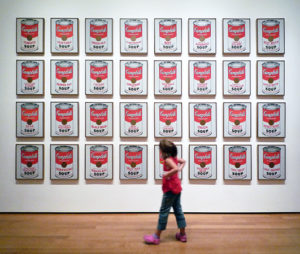
Lastly, when moving into the 20th century we see what is prominent in this century- consumer culture and mass media. This was seen through the new art movement- pop art. Andy Warhol “Campbell’s Soup Cans” is a prime example of this because it shows the mass produced product and it was advertised everywhere- so much so that Warhol used to drink it every day for 20 years! This thirty-two canvas painting represents the thirty-two soup flavors which were displayed on shelves together to look like grocery aisles at first. The bases of this kind of modern art is taking something which is not initially seen as art and makes us think about it in a different way. This art shows what was important then and now-mass production- and how it affected artworks of the 20th century.
Art has transformed over time to become even more complex, and its interpretations have changed as well. Today, good artworks give a different meaning to each individual person. Art can tell a story, depict a beautiful scene of nature, or convey humor. Art does not have to be specific or follow certain guidelines compared to art in the middle ages. If it weren’t to the inspiring individuals who shaped the development of art today, the diversity of artworks we have today wouldn’t exist. From movies to marketing and advertising, modern art is becoming more involved digitally while maintaining the physical beauty of what art is. Art shapes identities and impacts our society as a whole. Art helps creativity thrive and with the constant negativity in our continuing fast developing society, we need to embrace and support art now more than ever. Overall, we see how art changed from civilization to civilization based on what was prominent or important at that time. From ancient Egyptian which religion primed them to make their pieces to modern art where movements and mass media was a huge part of civilizations and impacted what was seen in the art at that time.
Work Cited Page:
Dr. Beth Harris and Dr. Steven Zucker, “Marble statue of a kouros (New York Kouros),” in Smarthistory, December 20, 2015, accessed December 9, 2018, https://smarthistory.org/marble-statue-of-a-kouros-new-york-kouros/.
Dr. Noelle Paulson “Vincent Van Gogh, The Starry Night.” Smarthistory, accessed December 14, 2018, smarthistory.org/van-gogh-the-starry-night/.
Gisela M. A. Richter. “The Greek Kouros in the Metropolitan Museum of Art.” The Journal of Hellenic Studies, vol. 53, 1933, pp. 51–53. JSTOR, JSTOR, www.jstor.org/stable/627245.
“MoMA Learning.” Lee Bontecou. Campbell’s Soup Cans. 1959 | MoMA, www.moma.org/learn/moma_learning/andy-warhol-campbells-soup-cans-1962/.
“The Fascinating Story behind Andy Warhol’s Soup Cans | Art | Agenda.” Phaidon, www.phaidon.com/agenda/art/articles/2013/february/22/the-fascinating-story-behind-andy-warhols-soup-cans
Annotated Bibliography
Britannica, The Editors of Encyclopaedia. “Baroque Art and Architecture.” Encyclopædia Britannica, Encyclopædia Britannica, Inc., 10 Dec. 2018, www.britannica.com/art/Baroque-art-and-architecture.
My first source helps me define Baroque art and architecture through the Britannica Encyclopedia. It is useful in helping me define Baroque art through better terms and gives me a deeper understanding about that time period. I learned about it’s dramatic and exaggerated ways through this website.
Metmuseum.org, metmuseum.org/art/collection/search/437526.
This source was the online resource from the Metropolitan Museum of Art that shows the painting and gives its description.
Metmuseum.org, metmuseum.org/art/collection/search/437986.
This source was the online resource from the Metropolitan Museum of Art that shows the painting and gives its description.
MET Museum Visit
Upon visiting the MET as a school assignment, I decided to make it a solo day trip adventure. I went on a Friday afternoon, which evidently became the busiest point in time I’ve ever seen a museum! I guess that’s what there is to do on such cold days, nonetheless it was really fun. I sat down by the Temple of Dendur in the Sackler Wing, which had a beautiful fountain/pond that I was able to plan the rest of my visit by. I made my way to the European Art section to complete this assignment.
There, I found numerous pieces of art work representing the year 1250 – 1800 and more specifically, the Renaissance and Baroque art periods. The difference between the two art forms is essentially their time period and their level of influence to the world. Renaissance art from the 15th and 16th century contain much about science, philosophy, literature, and education. Baroque art otherwise evoked more dramatic emotion and was to be able to reach even “the most illiterate” of the communities.

This first piece titled Madonna and Child with Saints Catherine of Alexandria, Leonard, Augustine, and Apolloni by Girolamo dai Libri is a great initial representation of Renaissance art. It’s origin alone, Verona, Italy, made in the 15th century is your first indicator. It was painted for the Augustinian church of San Leonardo, an altarpiece. The juxtaposition of the lively tree and the dead one beside it represent Death and Resurrection – key themes in Renaissance art. Renaissance art is very large on liveliness, rebirth, education, teaching, philosophy and beyond. This piece is a good representation of these themes.
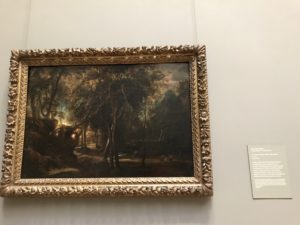
A good representation of Baroque time period is a dramatic hunting scene called A Forest at Dawn with a Deer Hunt created by Peter Paul Rubens. There are three aspects in which “hunting” is represented by: light vs. dark, growth vs. decay and life vs. death.
Final – Museum Tour
A topic that was presented to me towards the end of the semester were differences between Renaissance art and Baroque Art. On this themed museum tour, you’ll see five examples of Renaissance and Baroque pieces I have found at the Metropolitan Museum of Art.
Going in chronological order, we’ll start with Renaissance pieces. The first piece titled Madonna and Child with Saints Catherine of Alexandria, Leonard, Augustine, and Apolloni by Girolamo dai Libri is a great initial representation of Renaissance art. It’s origin alone, Verona, Italy, made in the 15th century is your first indicator. It was painted for the Augustinian church of San Leonardo, an altarpiece. The juxtaposition of the lively tree and the dead one beside it represent Death and Resurrection – key themes in Renaissance art. Renaissance art is very large on liveliness, rebirth, education, teaching, philosophy and beyond. This piece is a good representation of these themes.

Second on display is an oil on canvas, Renaissance piece called Saints Peter, Martha, Mary Magdalen and Leonard by Correggio (Antonio Allegri). Depicted are four standalone saints, in their deep thought. It is said that Correggio’s work was often inspired by Leonardo da Vinci’s work, a true Renaissance artist.
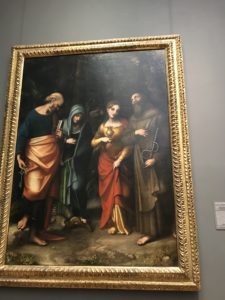
How these works differ from Baroque art work will be discussed with the following Baroque pieces. You would find all of these pieces in the European Art wing of the Met. It’s categorized by year 1250 – 1800, evidently including the 15th – 16th century (Renaissance works) and the 17th century (Baroque works). Baroque art work evolved from Renaissance times. It’s more about dramatic movements and motions. It was more inclusive, made for even the most illiterate to participate in.
My third viewing is titled Saint Francis in Ecstasy by Giovanni Benedetto Castiglione. Upon initial glance, you can automatically draw your attention to the dramatized scenery. Vignette effect around a lit Saint Francis holding up a cross against the sky. The scene seems half realistic, half dramatized with the skull at his feet. It follows elements of Christ from the Renaissance time periods as well. There is somewhat of a unclear split between what is of the spiritual world and the realistic world as well.
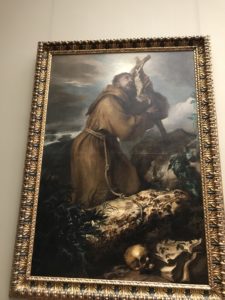
My fourth and fifth pieces are also Baroque pieces. They are from the 17th century which followed the Counter-Reformation religious shift at the end of the 16th Century. Many works were altarpieces that contained a great sense of grandeur and lavishness to them.
Number four is by Caravaggio called The Denial of Saint Peter. Off bat you can see there are only two to three brightly lit subjects while the rest is set in dramatic black. There is a solider pointing his finger at Saint Peter and the woman’s two fingers represent three accusations to Peter’s three denials.

My fifth piece shows you around more dramatized effects of the Baroque art period. It is a dramatic hunting scene called A Forest at Dawn with a Deer Hunt created by Peter Paul Rubens. There are three aspects in which “hunting” is represented by: light vs. dark, growth vs. decay and life vs. death.

I chose these specific pieces because it stood out to the eye. I also searched for specific key words on the description placards such as “life, death, Renaissance, dramatic, exaggerated,” and much more. These art works accurately represent the time periods they were created in, both Baroque and Renaissance.
Works Cited:
Britannica, The Editors of Encyclopaedia. “Baroque Art and Architecture.” Encyclopædia Britannica, Encyclopædia Britannica, Inc., 10 Dec. 2018, www.britannica.com/art/Baroque-art-and-architecture.
Metmuseum.org, metmuseum.org/art/collection/search/437526.
Metmuseum.org, metmuseum.org/art/collection/search/437986.
Final Project
Final Project- Creative Project
For my creative project, I have decided to make a piece inspired by the abstract expressionist artist, Jackson Pollock. Jackson Pollock was known for his drip paint style pieces that at first glance may just seem like random splatter on canvas, but in reality, these pieces were so much more. The movement was a direct result of the Post-World War 2 world where the world was somehow even more unstable than before.According to the Museum of Modern art, the abstract expressionist movement was born in the 1950s when “the spirit of optimism had morphed into a potent mix of power and paranoia,” this due to the Cold War and fear of communism spread by the McCarthy hearings (Abstract Expressionism, Museum of Modern Art). Like I stated before, these paintings are so much more because they belong to a movement in which there is a “direct relation to the artist’s emotions, expression, and mood, and showcased their feeling behind the pieces they designed” (Jackson Pollock and his Paintings, Jackson-pollock.org). This personal connection to the painting also allowed for artists to be non- objective and explore new unorthodox techniques to fulfill their emotional needs rather than to make a painting with a specific audience (other than themselves) in mind. Along with the emotional connections formed by the artist and their canvas, there are also technical aspects that make a painting an abstract expressionism piece such as “physical engagement with his materials welcomed gravity, velocity, and improvisation into the artistic process,” ensuring the current feelings of the artist are correctly translated into the canvas (Jackson Pollock, Museum of Modern Art).

My creative Project
At first, while researching Jackson Pollock and abstract expressionism I believed that creating my painting would be easy and effortless, but I was wrong. Many factors went into creating a piece that I was satisfied with including materials, colors, color combination, texture, and the use of negative space. In the beginning, I had to choose between using paint, nail polish, oil pastels, or crayons, and finally chose crayon. I had chosen Crayon because abstract expressionism artists used unconventional materials, Pollock using house paint, and I had believed that crayons and a blow dryer were unconventional materials. The use of crayon in my piece would also add some texture to it. After choosing crayons, I tested how melting crayon would react on paper and to my surprise, they actually did go together. I also learned to create the piece I wanted to create I had to control the crayon’s splatter as much as possible by positioning the crayon and blow dryer at a perfect angle and distance from the paper. On my first version, I melted the crayons one by one but it proved ineffective as the melting the crayon would also start to melt the already dried wax on the paper. On my second try, I chose a different color from the first failed piece of yellow, dandelion, orange, and green to pink, orange, and red. My second piece (first successful piece) was completed, but I was unsatisfied with the end result and the abundance of white negative space. My third and present version was like its second version, completely different from its predecessor, the paper was now painted completely in a darker and grayer Blue, the crayon colors where now black, dark purple, white, and gray, and the direction the crayons were melted was in a clockwise direction instead of diagonally towards the top left corner. My third version was my best one because I was able to add more elements that made the piece more well-rounded as well as staying true to the origins of the abstract expressionist and Jackson Pollock painting by connecting with my canvas and capture my state of mind and feeling (mostly fear and anxiety) into the piece.
Works cited
“Abstract Expressionism”, Museum of Modern Art, https://www.moma.org/learn/moma_learning/themes/abstract-expressionism/
“Jackson Pollock and his Paintings”, Jackson Pollock
Biography, Paintings, and Quotes, https://www.jackson-pollock.org/
“Jackson Pollock”, Museum of Modern Art, https://www.moma.org/artists/4675
“Abstract Expressionism”, The Metropolitan Museum of Art, https://www.metmuseum.org/toah/hd/abex/hd_abex.htm
“Abstract Expressionism”, The Art Story Modern Art Insight, https://www.theartstory.org/movement-abstract-expressionism.htm
Final project Walking Tour
What I wanted to explore with this final project is the way that rulers were represented by their people through art more specifically sculptures. How differently they were carved, for example, I wanted to see how their facial features differed from region to region. I want to see if the body types are idealistic and unrealistic or if they are plausible and reasonable.
Roman

The Romans never really liked to hold back in their sculptures. They made sure they got the Rulers imperfections in their sculptures because they wanted to be realistic and make sure that people know exactly what their ruler looked like. An example is the piece above is a Bronze statue of the emperor Trebonianus Gallus they didn’t make him look as good as possible they gave him a gut and they made sure to carve in the wrinkles on the face of Trebonianus. Romans were influenced by Greek and Egyptian art when they took over their land. Roman art is usually seen as having less worth to the Greek pieces because the Greek art was first and it looks more ideal.
French
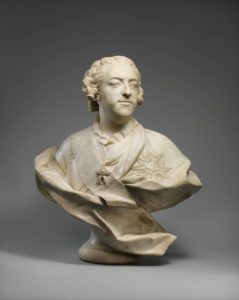
The French enjoyed making their leaders look strong in sculptures. Something that I have noticed when looking over the sculptures is that the leaders are always dressed up in a dignified way. This is a good example of how French leaders were represented. This is Louis XV and the king is shown wearing a suit of armor, a mantle thrown over his left shoulder, with the plaque and the ribbon of the Holy Spirit and the cordon of the Golden Fleece very high-class stuff. This sculpture is also made out of white marble a material that was used by the French in a lot of their early works where they later started to use bronze to sculpt.
Egypt
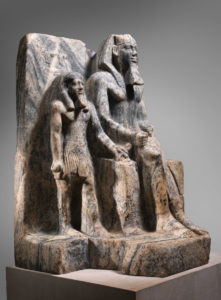
Ancient Egyptians had a very strong connection to religion they made their sculptures with deities from their times. They lived to please their gods so it made sense that they would add gods to their artwork. This has been identified as Sahure, the second ruler of Dynasty 5. Seated on a throne, the king is accompanied by a smaller male figure the local god of the Coptite nome. This deity offers the king an ankh (hieroglyph meaning “life”) with his left hand. This is a great example of Egyptian sculpting because the rulers of Egypt in these days were seen almost as gods. It would make sense that their rulers were Seen as higher than some gods and I think we don’t see a lot of sculptures like this because most other regions like to keep religion out of their sculptures and are more focused on making their leaders look good.
Greek
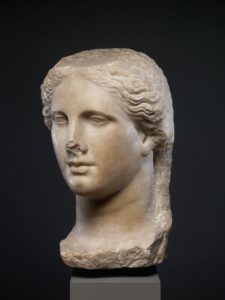
Greeks wanted to be perfect. The sculptures of emperors and royals from Greece usually have perfect figures. They give them 6 packs and a really lean and fit body they take away the imperfections from their faces so that they can look their best. The Greeks change everything that they can in order to make their leaders look perfect and give them this godlike aura they also used marble as it was popular to use. This example is a bit beaten up but you can see how she has no wrinkles unlike the Romans her skin is smooth and her face seems symmetrical and there is detail on her hair. This is showing the head of a Ptolemaic queen and she is really well made which sums up how Greek art is made.
Mayan
Mayan pieces of art are a lot different than anything else on this list because they weren’t really influenced by anyone else here because they were more isolated and didn’t really have contact with Europe. The material looks more like ceramics which is also unique as these other places use marble. Mayans also didn’t really care about looking good which is evident above the facial features aren’t even really even carved out with too much attention. What is shown in this sculpture is that the garments that they wear are important this is a king and his crown is fully carved out and attention to detail was very important as that is what showed dominance.
Conclusion
After looking at all these pieces It is evident that every generation influenced the next. Rulers were represented usually presented very powerful and a lot of these places tended to use marble as material to carve out of. What really connected all the early pieces is the fashion that they had. All the rulers were usually shirtless and wore nothing but their loincloth and their crowns or other pieces of importance. In conclusion, every work of art is unique however, you can see certain features being passed down from culture to culture and see the influence these cultures have had on each other.
Sources
https://www.metmuseum.org/art/collection/search/318345
https://www.metmuseum.org/toah/works-of-art/2002.66/
https://www.metmuseum.org/art/collection/search/543882
https://www.metmuseum.org/art/collection/search/198766
https://www.metmuseum.org/art/collection/search/247117
Art Final Project
Option 1: Proposal
https://docs.google.com/document/d/1Ht9gFeBcQcLj97QmL7Tc71EhLLxUDKuC4DWSK84Wph4/edit?usp=sharing
